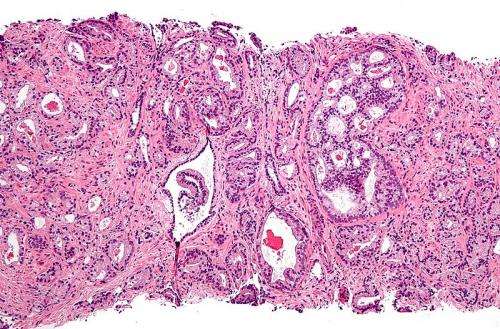Findings suggest improvement in management of localized prostate cancer

After years of overtreatment for patients with low-risk prostate cancer, rates of active surveillance/ watchful waiting increased sharply in 2010 through 2013, and high-risk disease was more often treated appropriately with potentially curative local treatment rather than androgen deprivation alone, according to a study in the July 7 issue of JAMA.
Matthew R. Cooperberg, M.D., M.P.H., and Peter R. Carroll, M.D., M.P.H., of the University of California, San Francisco, conducted a study to examine recent trends in community-based practice patterns of the management of localized prostate cancer. The researchers analyzed data from the Cancer of the Prostate Strategic Urologic Research Endeavor (CaPSURE), a national registry accruing men with prostate cancer diagnosed at 45 urology practices across the United States since 1995. All but 3 are community-based practices and 28 states across all regions are represented. The study included men with tumors classified as stage cT3aNoMo or lower managed with prostatectomy, radiation, androgen deprivation monotherapy, or active surveillance/watchful waiting between 1990 and 2013.
The analysis included 10,472 men; average age, 66 years. Surveillance use for low-risk disease remained low from 1990 through 2009 (varying from 7 percent to 14 percent), but increased sharply in 2010 through 2013 (to 40 percent). Conversely, treatment with androgen deprivation for intermediate-risk and high-risk tumors, which had been increasing steadily from 1990 (10 percent and 30 percent, respectively), decreased sharply (to 4 percent and 24 percent, respectively).
Among men 75 years or older, the rate of surveillance was 54 percent from 1990 through 1994, declined to 22 percent from 2000 through 2004, and increased to 76 percent from 2010 through 2013. There was an increase in the use of surgery for men 75 years or older with low-risk cancer to 9.5 percent and intermediate-risk cancer to 15 percent; however, there was not an increase in use for those with high-risk cancer, among whom androgen deprivation still accounted for 67 percent of treatment.
Substantial variation persisted in treatment patterns across individual practices, as observed previously.
"The magnitude and speed of the changes suggest a genuine change in the management of patients with prostate cancer in the United States, which could accelerate as more clinicians begin to participate in registry efforts. Given that overtreatment of low-risk disease is a major driver of arguments against prostate cancer screening efforts, these observations may help inform a renewed discussion regarding early detection policy in the United States," the authors write.
More information: JAMA, DOI: 10.1001/jama.2015.6036


















